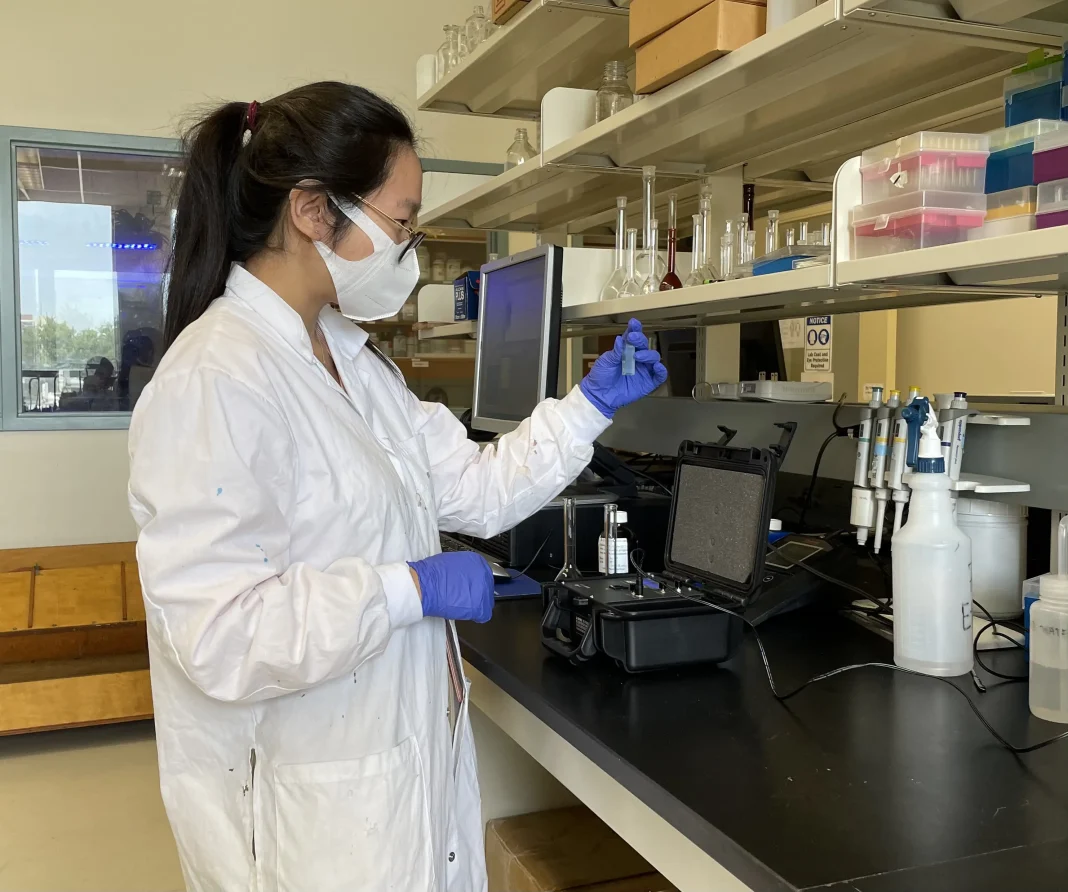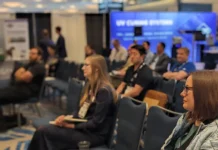UV Solutions
The International Ultraviolet Association (IUVA) has announced the winners of its biennial achievement awards. The IUVA received a record number of submissions, and the association thanks all the award nominees for their tremendous work in UV technology.
The IUVA RadLaunch winners also have been announced. These awards recognize innovative technology developments with a special focus on UV disinfection related to water, food and beverage, and health care.
IUVAAchievement Awards
Lifetime Achievement Award for Sustained Contributions to UV Technology and IUVA
Troy Cowan, Vision Based Consulting, LLC
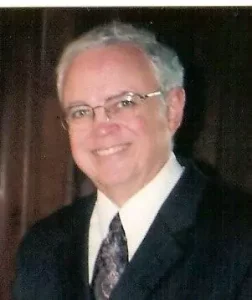 Troy Cowan started and has led the development of the IUVA healthcare group – which now numbers over 100 professionals representing a broad cross section of disciplines and interests – to address issues including COVID, HAIs, healthcare, and all spaces important to human health. “Troy has done this with steady and insistent leadership,” according to Matt Hardwick, ResInnova Labs. “He handles the group with humor and humility. Everything our group has achieved in the last two-plus years is all down to his leadership.”
Troy Cowan started and has led the development of the IUVA healthcare group – which now numbers over 100 professionals representing a broad cross section of disciplines and interests – to address issues including COVID, HAIs, healthcare, and all spaces important to human health. “Troy has done this with steady and insistent leadership,” according to Matt Hardwick, ResInnova Labs. “He handles the group with humor and humility. Everything our group has achieved in the last two-plus years is all down to his leadership.”
Cowan is the owner and founder of Vision Based Consulting, LLC, and has been supporting clients in the federal regulatory workspace for more than 40 years. Cowan became an advocate for UV-C’s potential to save lives by reducing the risk of hospital acquired infections (HAIs), and the need for standards to demonstrate efficacy to healthcare providers.
In his work with IUVA, Cowan has met with several Senate and House committee staffers to promote the development of UV-C efficacy standards, and established the IUVA Healthcare/UV Working Group, now at more than 120 members across 14 countries. As the managing coordinator of the Working Group, Cowan has staged three major workshops on UV-C disinfection and facilitated three international webinars in the last four years.
In further support of these efforts, Cowan has built alliances between IUVA and several key organizations, such as NIST, IES and ASHRAE. He has also led the drive toward IUVA acceptance as an ISO affiliated organization, as a member of FDA’s Network of Experts and EPA’s Smart Sectors programs. This has led to the development of ANSI/IUVA/IES/LM-92, now under review, and at least three other standards under development in partnership with IES, with one under development with ASHRAE.
“UV Light” Award for an Outstanding IUVA Volunteer
Ted Mao, Ph.D., CTO at Evercloak Inc., founder and principal consultant at MW Technologies, Inc.
 With the onset of COVID-19, Dr. Ted Mao led an important effort by IUVA to create a COVID-19 Task Force, which developed an IUVA dedicated website and published a series of white papers to ensure proper information was developed and disseminated on UV technology and the role it might play to combat the new coronavirus outbreak. He regularly provides his expertise to support IUVA efforts and still leads regular calls of the Task Force, providing an opportunity for the UV community to share technical information. Mao volunteers tirelessly as an IUVA leader, with positions as co-VP of the Americas, as a member of the IUVA Executive Operating Committee and as a member of the IUVA Board of Directors.
With the onset of COVID-19, Dr. Ted Mao led an important effort by IUVA to create a COVID-19 Task Force, which developed an IUVA dedicated website and published a series of white papers to ensure proper information was developed and disseminated on UV technology and the role it might play to combat the new coronavirus outbreak. He regularly provides his expertise to support IUVA efforts and still leads regular calls of the Task Force, providing an opportunity for the UV community to share technical information. Mao volunteers tirelessly as an IUVA leader, with positions as co-VP of the Americas, as a member of the IUVA Executive Operating Committee and as a member of the IUVA Board of Directors.
Special IUVA Award for Extraordinary Contributions to the Advancement of UV Technology
Dianne Poster, Ph.D., National Institute of Standards and Technology

Dianne L. Poster has worked tirelessly to help advance UV technology within the US federal government at the National Institute of Standards and Technology (NIST). Notably she was the driving force behind the very successful “IUVA Workshop on UV Disinfection Technologies and Hospital Associated Infections” held at NIST, Gaithersburg, Maryland, in 2020. That success led to interest in the publication of papers presented at that meeting in the prestigious Journal of Research of the National Institute of Standards and Technology, a highly visible and well-cited journal. Many of these articles are significant to the field and this publication will provide high-visibility for the IUVA and UV-C disinfection, in general. She has been an initial and active member of the IUVA Healthcare/UV Working Group and was also deeply involved in the recent “IUVA Ultraviolet (UV) Disinfection and the Return to Normalcy” webinar for which she was a panel moderator and organizer.
UV Young Professional (YP) Award for Contributions to UV Technology and IUVA
Nathan Moore, University of Toronto
 Nathan Moore has been a driving force behind the IUVA’s creation of the IUVA YPs. He was the founding co-chair and has helped in the creation of the YP podcasts and YP contributions to UV Solutions. Outside of the IUVA, Moore is leading an important Water Research Foundation project on the exploration of UV-chlorine advanced oxidation. His Ph.D. work will be a significant contribution to the water industry. Moore routinely leads many STEM activities at the University of Toronto, including volunteering to introduce young people to science and engineering on behalf of the university, visiting local primary schools to run water-related experiments for children, and organizing sanitation projects and educational events in Jamaica. “Nathan has won many awards to recognize his academic excellence and volunteer efforts,” says Ron Hofmann, IUVA President, University of Toronto. “We are excited to honor him for his contributions to IUVA – he has proved himself as a future leader in our industry.”
Nathan Moore has been a driving force behind the IUVA’s creation of the IUVA YPs. He was the founding co-chair and has helped in the creation of the YP podcasts and YP contributions to UV Solutions. Outside of the IUVA, Moore is leading an important Water Research Foundation project on the exploration of UV-chlorine advanced oxidation. His Ph.D. work will be a significant contribution to the water industry. Moore routinely leads many STEM activities at the University of Toronto, including volunteering to introduce young people to science and engineering on behalf of the university, visiting local primary schools to run water-related experiments for children, and organizing sanitation projects and educational events in Jamaica. “Nathan has won many awards to recognize his academic excellence and volunteer efforts,” says Ron Hofmann, IUVA President, University of Toronto. “We are excited to honor him for his contributions to IUVA – he has proved himself as a future leader in our industry.”
UV Engineering Project of the Year
AquiSense Technologies, in partnership with Mitsubishi Electric, to provide UV-C LED graywater recycling treatment for the Japanese residential market
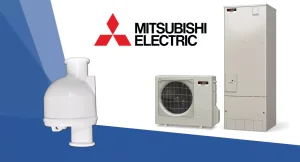 Mitsubishi is one of the world’s leading names in manufacturing and sales of electronic products and systems used in a broad range of fields and applications. The graywater recycling market in Japan consists of hundreds of thousands of units sold per year with several large corporations as the key players. In Japan, it is customary for families to use the same bath water in an effort to limit water use. Typically, a hot water supply system is installed in each household, which is used to reheat the bath water for each person. In general, there is a difference in the bathing time of children and adults. The water therefore sits for a time allowing potential bacterial growth. Mitsubishi identified the need to prevent bacteria from multiplying between each bath. The solution was to develop an advanced system that uses UV-C LEDs, which have strong bactericidal inactivation capabilities. Recirculating the water through the UV-C LED system provides added inactivation potential as it exposes UV light to each pathogen multiple times. AquiSense was identified by Mitsubishi as a known leader of UV-C LED module manufacturing. AquiSense worked closely with Mitsubishi to design and develop a module suitable for a heat-pump hot water supply system. This module has been tested and adopted as a component for the Mitsubishi “Eco Cute” heat-pump hot water supply system. Currently, AquiSense provides Mitsubishi around 100,000 UV-C LED modules per year. Beyond Mitsubishi, other corporations in the graywater recycling market are coming online in 2021 and 2022, easily doubling the amount of UV-C LED disinfection modules being integrated into this market.
Mitsubishi is one of the world’s leading names in manufacturing and sales of electronic products and systems used in a broad range of fields and applications. The graywater recycling market in Japan consists of hundreds of thousands of units sold per year with several large corporations as the key players. In Japan, it is customary for families to use the same bath water in an effort to limit water use. Typically, a hot water supply system is installed in each household, which is used to reheat the bath water for each person. In general, there is a difference in the bathing time of children and adults. The water therefore sits for a time allowing potential bacterial growth. Mitsubishi identified the need to prevent bacteria from multiplying between each bath. The solution was to develop an advanced system that uses UV-C LEDs, which have strong bactericidal inactivation capabilities. Recirculating the water through the UV-C LED system provides added inactivation potential as it exposes UV light to each pathogen multiple times. AquiSense was identified by Mitsubishi as a known leader of UV-C LED module manufacturing. AquiSense worked closely with Mitsubishi to design and develop a module suitable for a heat-pump hot water supply system. This module has been tested and adopted as a component for the Mitsubishi “Eco Cute” heat-pump hot water supply system. Currently, AquiSense provides Mitsubishi around 100,000 UV-C LED modules per year. Beyond Mitsubishi, other corporations in the graywater recycling market are coming online in 2021 and 2022, easily doubling the amount of UV-C LED disinfection modules being integrated into this market.
UV Product Innovation (Unique Product, Commercially Available)
UV Reflectance Meter, Gigahertz-Optik
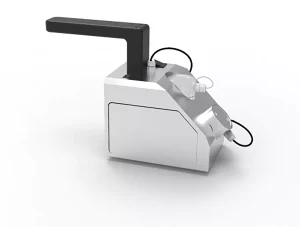 This device is a unique and much needed tool in the UVC disinfection application. It provides a means to measure UVC surface reflectance, both specular and diffuse, on site. This information is needed for accurate modeling of expected UVGI levels within the space. The product was developed in cooperation with UVC light source manufacturers and software companies requiring such a tool.
This device is a unique and much needed tool in the UVC disinfection application. It provides a means to measure UVC surface reflectance, both specular and diffuse, on site. This information is needed for accurate modeling of expected UVGI levels within the space. The product was developed in cooperation with UVC light source manufacturers and software companies requiring such a tool.
Best Paper: ‘Classic’ UV Paper (Important Frequently Referenced Paper, Prior to 2019)
Protocol for Determining Ultraviolet Light Emitting Diode (UV-LED) Fluence for Microbial Inactivation Studies by Ataollah Kheyrandish, Madjid Mohseni and Fariborz Taghipour
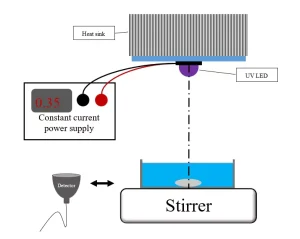 UV fluence determination in any photochemical or biological process that used UV radiation is crucial. Inaccurate UV dose determination can significantly impact the UV process designs and cause over/underestimation of UV efficiency in different processes. Unlike conventional mercury lamp systems, no standard method is available to determine the average fluence in UV-LED systems. Also, the conventional methods used to determine the fluence for UV mercury lamps are not applicable to UV-LEDs due to the relatively low power output, polychromatic wavelength and specific radiation profile of UV-LEDs. This paper proposed a method to determine the average fluence for UV-LED set-ups by considering the UV-LEDs’ radiation profile, radiation spectrum and radiant power, in addition to the experimental set-up. Utilizing the proposed UV dose determination method will help researchers achieve more accurate microbial inactivation results and obtain precise kinetics data for UV-LED systems.
UV fluence determination in any photochemical or biological process that used UV radiation is crucial. Inaccurate UV dose determination can significantly impact the UV process designs and cause over/underestimation of UV efficiency in different processes. Unlike conventional mercury lamp systems, no standard method is available to determine the average fluence in UV-LED systems. Also, the conventional methods used to determine the fluence for UV mercury lamps are not applicable to UV-LEDs due to the relatively low power output, polychromatic wavelength and specific radiation profile of UV-LEDs. This paper proposed a method to determine the average fluence for UV-LED set-ups by considering the UV-LEDs’ radiation profile, radiation spectrum and radiant power, in addition to the experimental set-up. Utilizing the proposed UV dose determination method will help researchers achieve more accurate microbial inactivation results and obtain precise kinetics data for UV-LED systems.
UV Best Paper (Impactful Research Paper Published During the Period 2019 to Present)
Quantification and modeling of the response of surface biofilm growth to continuous low intensity UVC irradiation by Hamed Torkzadeh, Katherine R. Zodrow, William C. Bridges, Ezra L. Cates
This paper reports on the development of an experimental apparatus and method for growing biofilms under concurrent UV irradiation and quantifying the resulting suppression of surface growth rates. Though widely applied for disinfection of water and food, UVC may also be used to prevent bacterial growth on surfaces within engineered systems for fouling prevention and deterrence of opportunistic pathogens. Rational design for incorporation of UVC sources, such as LEDs, into devices with complex internal geometries is currently hampered by the lack of an engineering framework for predicting reductions in biofilm growth rates in response to continuous low-intensity irradiation. To address this need, the authors developed a biofilm growth and irradiation system, along with methods for quantifying surface growth rate reductions. The results of E. coli experiments indicated that biofilms can establish even under irradiation conditions that would result in complete inactivation of planktonic cells, likely due to the shielding effects of colloidal material and microbial exudates. A pseudo-mechanistic model was also developed which correlated UV intensity to the resultant reduction in specific surface biovolume.
UV Best Paper: Impactful UV Solutions/IUVA News Article (For the Period 2019 to Present)
Total UV Power from an Irradiance Measurement – Correcting the Keitz Equation by Stephen W. Jaworowicz, Light Sources, Inc., June 2019
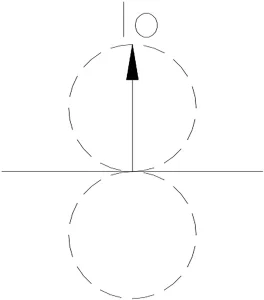 The author produced a critical review / correction of the important Keitz Equation. The corrective approach that was proposed yields more accurate lamp output power approximations, which are critical when modeling out UV lamp containing systems for air, surface or water applications. https://uvsolutionsmag.com/articles/2019/total-uv-power-from-an-irradiance-measurement-correcting-the-keitz-equation/.
The author produced a critical review / correction of the important Keitz Equation. The corrective approach that was proposed yields more accurate lamp output power approximations, which are critical when modeling out UV lamp containing systems for air, surface or water applications. https://uvsolutionsmag.com/articles/2019/total-uv-power-from-an-irradiance-measurement-correcting-the-keitz-equation/.
UV Innovation
Dmitry Ozol, Moscow Institute of Physics and Technology
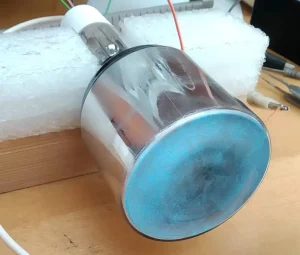 Cathode-ray UV-radiation sources represent one of the possible “green” UV solutions, potentially inexpensive, effective and durable. The electron-beam excitation of a luminophore is well known in CRTs, having a long application history in TV sets. Since the CRTs’ spectrum depends only on the type of phosphor, by replacing in such devices the CRT phosphor with a UV-emitting one it is possible to create sources of UV-radiation. Many types of UV-band luminophores are already known with the efficiency of cathodoluminescence up to 9% and even 20%. The theoretical limit is 30% to 40% for phosphors emitting in the visual spectral range and up to 40% to 50% for deep-UV emitting phosphors. The prototypes of cathodoluminescent UV-radiation sources use field emission cathodes based on carbon fiber. These sources exhibit various UV spectra depending on the phosphors used. New types of UV-emitting cathode-ray-tube phosphors are suggested. The use of non-heated field emission cathodes allows decreasing the power consumption of the device and increases its service life. The MIPT team is working on UV-lamps 300 nm to 350 nm range for photocatalytic disinfection of air.
Cathode-ray UV-radiation sources represent one of the possible “green” UV solutions, potentially inexpensive, effective and durable. The electron-beam excitation of a luminophore is well known in CRTs, having a long application history in TV sets. Since the CRTs’ spectrum depends only on the type of phosphor, by replacing in such devices the CRT phosphor with a UV-emitting one it is possible to create sources of UV-radiation. Many types of UV-band luminophores are already known with the efficiency of cathodoluminescence up to 9% and even 20%. The theoretical limit is 30% to 40% for phosphors emitting in the visual spectral range and up to 40% to 50% for deep-UV emitting phosphors. The prototypes of cathodoluminescent UV-radiation sources use field emission cathodes based on carbon fiber. These sources exhibit various UV spectra depending on the phosphors used. New types of UV-emitting cathode-ray-tube phosphors are suggested. The use of non-heated field emission cathodes allows decreasing the power consumption of the device and increases its service life. The MIPT team is working on UV-lamps 300 nm to 350 nm range for photocatalytic disinfection of air.
2021 IUVA RadLaunch Winners
SoLED POU Water Disinfection: Team from Tel Aviv University
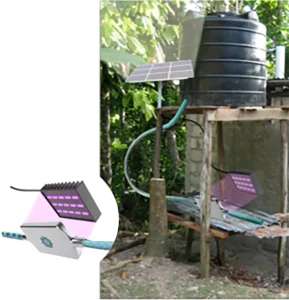 The population in developing countries have limited access to safe drinking water, causing diseases, poor nutrition and a daily death rate of over 800 children under five years. In these countries most of the population live in rural areas, where there is no proper infrastructure or resources to support continuous water treatment e.g., inadequate or no piping systems, intermittent or no electricity, unskilled personnel for maintenance and fragmented supply chain.
The population in developing countries have limited access to safe drinking water, causing diseases, poor nutrition and a daily death rate of over 800 children under five years. In these countries most of the population live in rural areas, where there is no proper infrastructure or resources to support continuous water treatment e.g., inadequate or no piping systems, intermittent or no electricity, unskilled personnel for maintenance and fragmented supply chain.
Led by Dana Pousty and Prof. Hadas Mamane from the Water Technology lab, Tel Aviv University, with the vision to prevent mortality and improve the health of billions of people in developing countries, SoLED is a solar-powered IoT water disinfection device designated for infrastructure-limited areas as developing rural countries. SoLED is a super-efficient UV-LED reactor based on a patented technology that provides maximum disinfection effect with minimum costs while enabling a solar-powered solution. The reactor could be seamlessly integrated into existing systems to assure virus treatment and lower maintenance costs or provided as a stand-alone product integrated into any pipe. The patent enables combining multiple frequencies (wavelengths), to dramatically reduce upfront costs and energy consumption and enhance bacteria inactivation.
Novel UV-C Sensor Technology for Use in Air and Surface Disinfection Applications: L&M Instruments
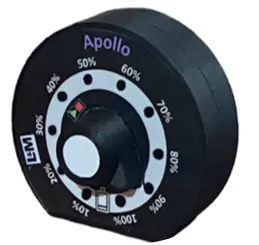 The COVID-19 pandemic brought attention to what many in the UVGI community already know: UV-C is highly effective in inactivating dangerous pathogens. As the market expands and the UV-C source technology advances (safer, higher fluence rate, faster kill), so does the demand on UV-C sensing technology.
The COVID-19 pandemic brought attention to what many in the UVGI community already know: UV-C is highly effective in inactivating dangerous pathogens. As the market expands and the UV-C source technology advances (safer, higher fluence rate, faster kill), so does the demand on UV-C sensing technology.
L&M designs and manufactures stand-alone and networked (IoT) sensors and solutions that enable customers to manage business critical outcomes through the knowledge gained from precision, always-on sensors, analytics and alerting. L&M sells products and licenses technology. The novel UV-C sensor technology combines ultra-low power compute, precision light sensing and flexible interfacing, resulting in a range of applicability for disinfection system providers and end-users alike.
UV-Based Filterless Personal Protection Equipment: Open Source Project by HelpfulEngineering.org
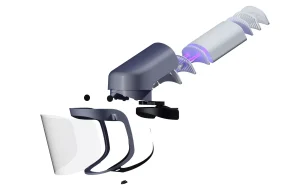 UVisor is the world’s first filterless full face protection against COVID-19 and future biological threats, built as a fully integrated, compact, battery-operated and lightweight positive-air-pressure visor powered by a UV sterilization chamber. A technology demonstrator of the UVisor UV Chamber achieved >99.7% efficacy in testing by Sandia National Laboratories against MS2 surrogate virus. The UVisor has several design advantages over conventional masks, including better protection, full face visibility, better comfort and 100% reusability. Being filter-less also gives the UVisor several design advantages over currently available powered respirators – lighter, quieter, cheaper and no bio-disposal or waste concerns – and by using UV for sterilization, no consumable parts. The UVisor technology is also envisioned to be used for many other purposes including exhaled air purification, vent exhaust purification and other sterilization.
UVisor is the world’s first filterless full face protection against COVID-19 and future biological threats, built as a fully integrated, compact, battery-operated and lightweight positive-air-pressure visor powered by a UV sterilization chamber. A technology demonstrator of the UVisor UV Chamber achieved >99.7% efficacy in testing by Sandia National Laboratories against MS2 surrogate virus. The UVisor has several design advantages over conventional masks, including better protection, full face visibility, better comfort and 100% reusability. Being filter-less also gives the UVisor several design advantages over currently available powered respirators – lighter, quieter, cheaper and no bio-disposal or waste concerns – and by using UV for sterilization, no consumable parts. The UVisor technology is also envisioned to be used for many other purposes including exhaled air purification, vent exhaust purification and other sterilization.
A Portable Device to Measure Hydroxyl Radical Scavenging Capacity in Water Samples: Team from the University of Toronto
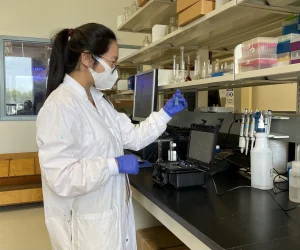 The hydroxyl radical scavenging capacity of water to be treated influences the effectiveness of advanced oxidation processes. Conventional methods for its measurement are time-consuming and need sophisticated instrumentation and expertise to carry them out. Chengjin Wang at the University of Toronto collaborated with Erik Rosenfeldt at Hazen and Sawyer to create a novel “external calibration” method to conduct fast and robust measurements of this parameter. The method now is being developed into a simple, portable monitoring device that will empower the treatment plant managers to understand the variation of the scavenging capacity of water on a regular basis so that they can adopt corresponding measures to adjust and optimize their operation.
The hydroxyl radical scavenging capacity of water to be treated influences the effectiveness of advanced oxidation processes. Conventional methods for its measurement are time-consuming and need sophisticated instrumentation and expertise to carry them out. Chengjin Wang at the University of Toronto collaborated with Erik Rosenfeldt at Hazen and Sawyer to create a novel “external calibration” method to conduct fast and robust measurements of this parameter. The method now is being developed into a simple, portable monitoring device that will empower the treatment plant managers to understand the variation of the scavenging capacity of water on a regular basis so that they can adopt corresponding measures to adjust and optimize their operation.
UVC Wing, Mobility + Angle Control: Dimer
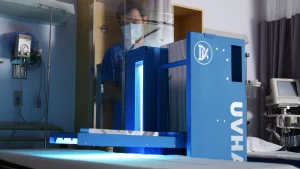 A proprietary design offers unparalleled capabilities in the surface decontamination space. Dimer patents enable the ability to adjust the angle and position of a “UVC wing” to quickly deliver strong germicidal dosage to any high touch surface. This functionality allows the optimization angle of incidence and minimizes distance between the UV source and target surface, quickly delivering consistent exposure across any surface. Additionally, integrated safety features make it the only operator-driven unit on the market, eliminating workflow inefficiencies.
A proprietary design offers unparalleled capabilities in the surface decontamination space. Dimer patents enable the ability to adjust the angle and position of a “UVC wing” to quickly deliver strong germicidal dosage to any high touch surface. This functionality allows the optimization angle of incidence and minimizes distance between the UV source and target surface, quickly delivering consistent exposure across any surface. Additionally, integrated safety features make it the only operator-driven unit on the market, eliminating workflow inefficiencies.


